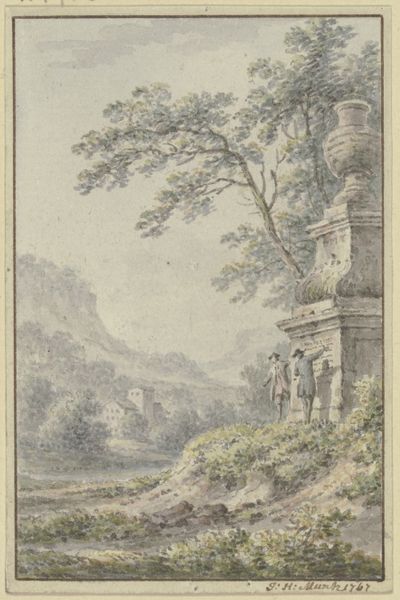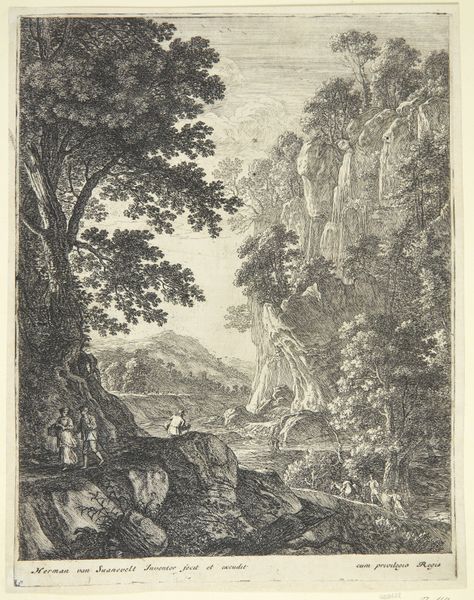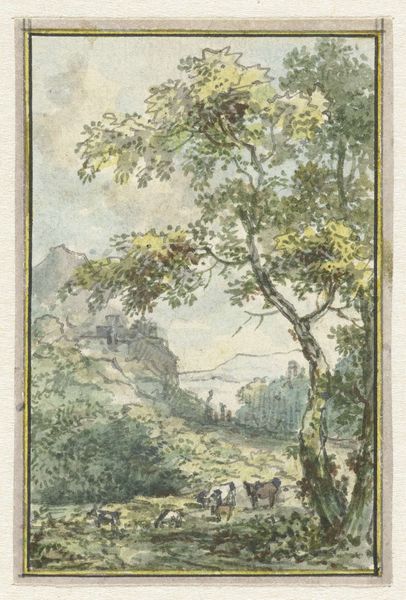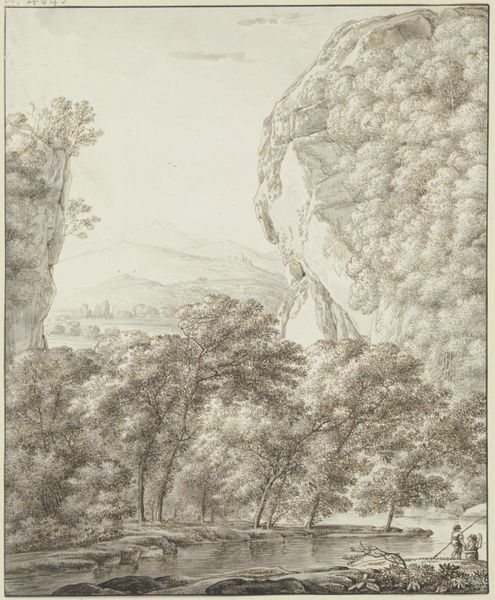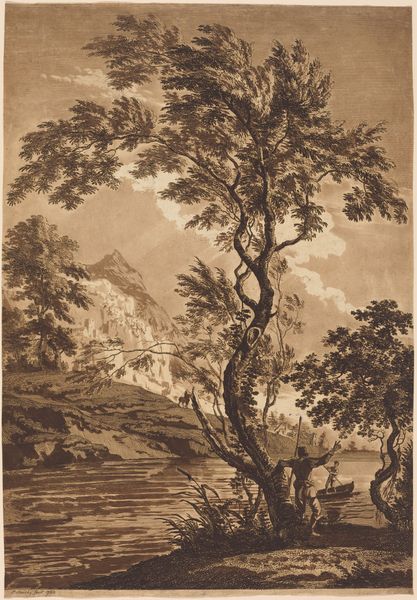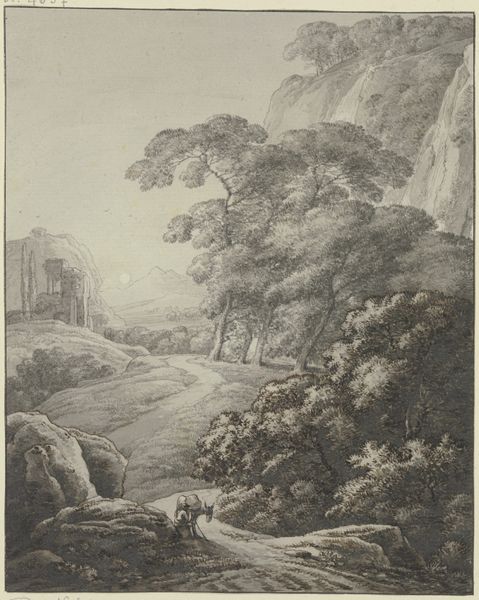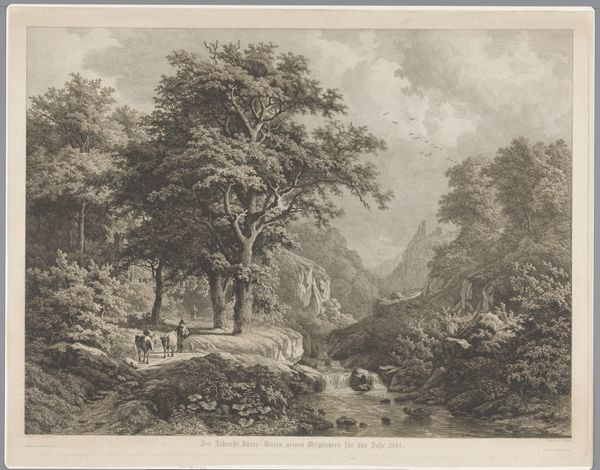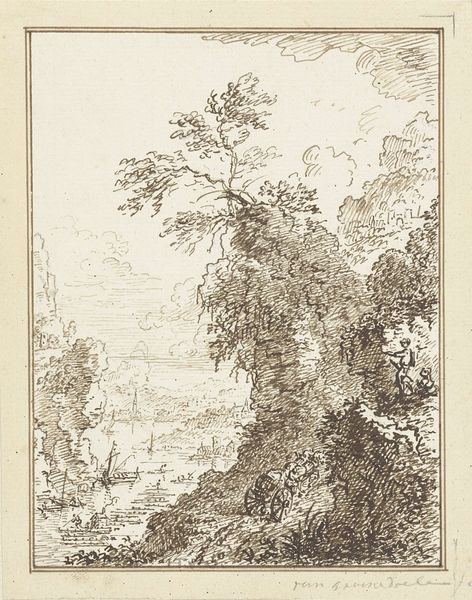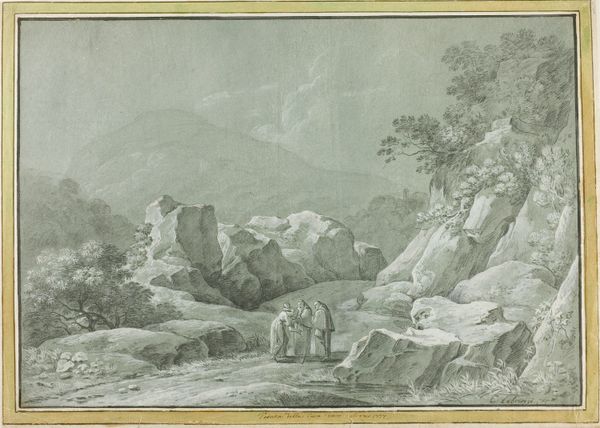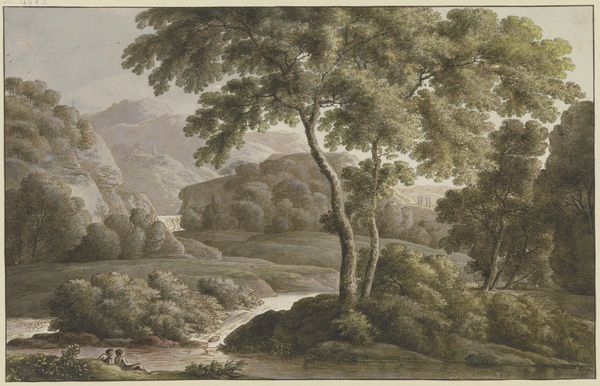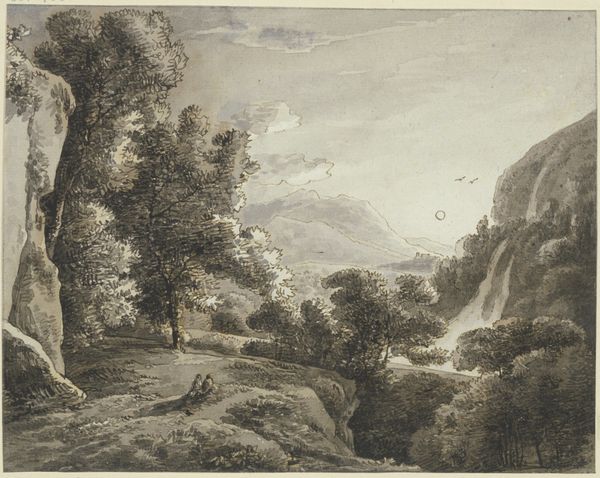
Blick in eine Berglandschaft mit einer Burg, im Vordergrund ein Hohlweg mit drei Figuren 1767
0:00
0:00
Copyright: Public Domain
Johann Heinrich Müntz created “View into a Mountainous Landscape with a Castle, in the Foreground a Sunken Road with Three Figures” in 1767. During the 18th century, landscape art served not just as a visual delight but as a reflection of philosophical ideas about humanity's place in nature. Thinkers like Rousseau emphasized the "natural man," whose virtue lay in being untouched by society. Here, the three figures invite us to contemplate their relationship to the landscape. Are they merely observers, or are they active participants in this natural world? The castle perched atop the mountain also presents a contrast to the simplicity of the figures. It is a symbol of power, history, and perhaps even human arrogance against the natural world. Müntz uses the landscape to ask questions about our own place, our own histories, and our own aspirations. It’s an invitation to locate ourselves within this broader tableau of nature and humanity.
Comments
No comments
Be the first to comment and join the conversation on the ultimate creative platform.
